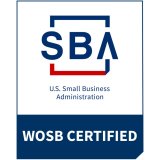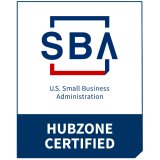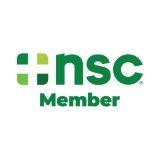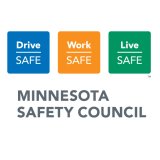Custom Hearing Protection Solutions Promote Success
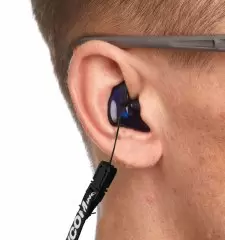 Let's talk about the real world. No matter how high the laboratory Noise Reduction Rating (NRR), your employees will not wear a hearing protector if it's not comfortable, convenient, compatible with other personal protective equipment, and allows effective communication in the workplace. Personalized custom technology is now readily available for both hearing protectors and communication earsets. Custom-made earpieces can help you overcome many of the toughest objections to traditional hearing protectors that come your way.
Let's talk about the real world. No matter how high the laboratory Noise Reduction Rating (NRR), your employees will not wear a hearing protector if it's not comfortable, convenient, compatible with other personal protective equipment, and allows effective communication in the workplace. Personalized custom technology is now readily available for both hearing protectors and communication earsets. Custom-made earpieces can help you overcome many of the toughest objections to traditional hearing protectors that come your way.
What exactly is a custom hearing protector?
A custom hearing protector is a laboratory-made set of earplugs or communication earpieces specially created for an individual user. First, impressions of the user's ears are taken with a soft putty-like impression material (see Steps 1 and 2). The ear impression is then sent to an earmold laboratory to custom-manufacture a set of earplugs or radio communication earsets designed to precisely fit that individual's outer ear and ear canal. The amount of noise reduction is determined primarily by the portion of the earplug that fits into the ear canal. Generally, the longer the canal section and the better the fit of this part of the earplug, the higher the attenuation or noise reduction. Be wary of moldable materials purported to create immediate earplugs by hand molding – these products often do not fit well or hold up with daily use.
Step 1: Taking an ear impression: a foam block is placed in the ear canal, then soft putty-like molding material is placed into the ear and allowed to harden.
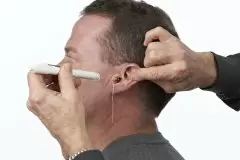
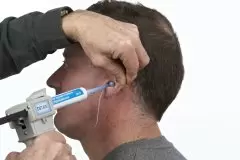
Step 2: Once impression material is cured, the ear impression is removed and sent to a lab for manufacture.
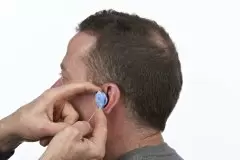
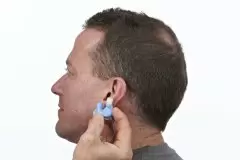
Some labs manufacture the earplug by physically creating negative then positive molds from the ear impression which are hand-manipulated by a technician. CavCom custom products, however, are manufactured by state-of-the-art rapid prototyping (stereolithography) from a high resolution digital scanning process of the ear impression. Final custom earplugs are crafted from acrylic or silicone depending on user application and preference (See Step 3 examples). Laboratories using the hand-manipulated technique may not retain the impression for future use because the impression material has a limited "shelf life." CavCom‘s digital processing technology, however, has the capability to store electronic files indefinitely for ease in ordering exact replacements in the event of loss or need for a different custom product.
Step 3: Example final custom-manufactured earpieces.
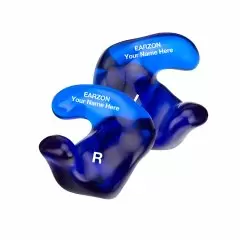
![]()
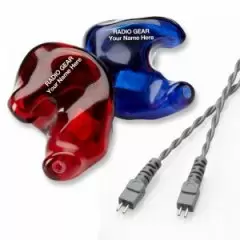
What are the benefits of custom hearing protectors for the workplace?
- Fit for all: One clear advantage of custom hearing protection is that all sizes and shapes of ears can be accommodated, even when surgery, disease or injury has radically changed the characteristics of the outer ear.
- Consistent protection: Because custom earplugs go in the ear just one way and are designed to fit the individual's ear canal precisely, research studies show that actual protection in the real-world more closely matches laboratory-derived noise reduction predictions than other classes of earplugs.
- Durable, long-lasting: Unlike foam or even most premolded vinyl earplugs, customs are designed to survive for years. A set of custom earplugs can last many years due to the considerable strength and durability of materials. Digital storage of ear impressions allows remakes to be made without taking new ear impressions (new impressions may be needed to address any significant changes to a user's ear canals resulting from substantial weight change, injury, etc.).
- Hygienic: Work environments are often hot, dirty, dusty, greasy, or laden with hazardous or irritating chemicals. Unlike typical disposable protectors which must be rolled between the fingers, custom earplugs do not require compression. If properly made, they also will not absorb oil and dirt, and are washed easily with soap and water.
- Better for the environment: It can be startling to realize how many foam or other disposable-type earplugs are thrown away every day. For an average workforce, this may translate to literally tens of thousands of discarded earplugs annually! Using a custom product that lasts for years significantly decreases waste and conserves resources. Many clients tell us their clean-up time is reduced as well --- disposable earplugs often find their way to the floor and septic systems rather than the trash can.
- Personalized attention = motivation: Clearly, one of the major advantages of a custom-made product is the opportunity to boost motivation by individually addressing the employee's needs and concerns. CavCom engraves the user's name for added personalization.
- Cost effective: Many people are surprised to learn that custom hearing protectors can cost significantly less in the long run than disposable-type earplugs. To compare cost benefits for your facility, request CavCom‘s free Return on Investment Calculator.
What are the limitations of custom earplugs?
- Only as good as the ear impression: A custom-manufactured earpiece using the best laboratory technology is only as good as the quality of the original ear impression. It is critical that anyone taking ear impressions be well-trained and highly experienced.
- Learning curve: Because a custom hearing protector is so different from traditional earplugs, employees will need initial instruction on how to insert their new customs, as well as a little practice, too. The fact that the earplugs are custom-made to fit each ear, however, ensures that improper placement is obvious and quickly remedied.
- Not ideal with high employee turnover: Although custom earplugs will last for many years, the cost for purchasing them is incurred up-front when ear impressions are taken and earpieces manufactured. If a company has a history of high turnover in the workforce, employers may be reluctant to undertake this long-term investment.
- Not right for everyone: Despite all the advantages of custom earpieces, not everyone likes the feel of an earplug and some prefer an earmuff or foam product. In CavCom‘s experience, it's never beneficial to require all employees use a certain type of hearing protector. The most effective hearing conservation programs provide a variety of suitable protectors so employees can make their own choice based on job needs and personal preference.
How do we know a custom hearing protector is working?
No matter what hearing protection devices your employees use, it's important to monitor effectiveness via an ongoing hearing conservation program that includes noise exposure assessment/control, hearing protection selection, fitting and training, and annual education and audiometric testing. When assessing whether a hearing protector is suitable and doing its job, CavCom encourages Individual Fit Testing. Individual Fit Testing of hearing protectors is similar in concept to fit testing for respirators. Preferred methods produce a single overall estimate of real-world attenuation for each user (referred to as a Personal Attenuation Rating or PAR). Individual testing and PARs replace the need for clunky NRR derating schemes that may over- or under-estimate the amount of protection received by any given individual. And because custom hearing protectors are designed to precisely fit each user, research shows that real-world PAR ratings are closer to "best case" lab ratings than other types of earplugs.
At CavCom, we specialize in custom-manufactured products, offering program enhancements like insurance programs and a 90-day fit guarantee. We know that the very best hearing protector is the one a person likes and will wear willingly and consistently. Contact CavCom to discuss how custom earplugs and radio communication earsets can improve voluntary employee participation, reduce costs, and enhance the success of your overall hearing conservation program.
| Category: | Hearing Protection |


